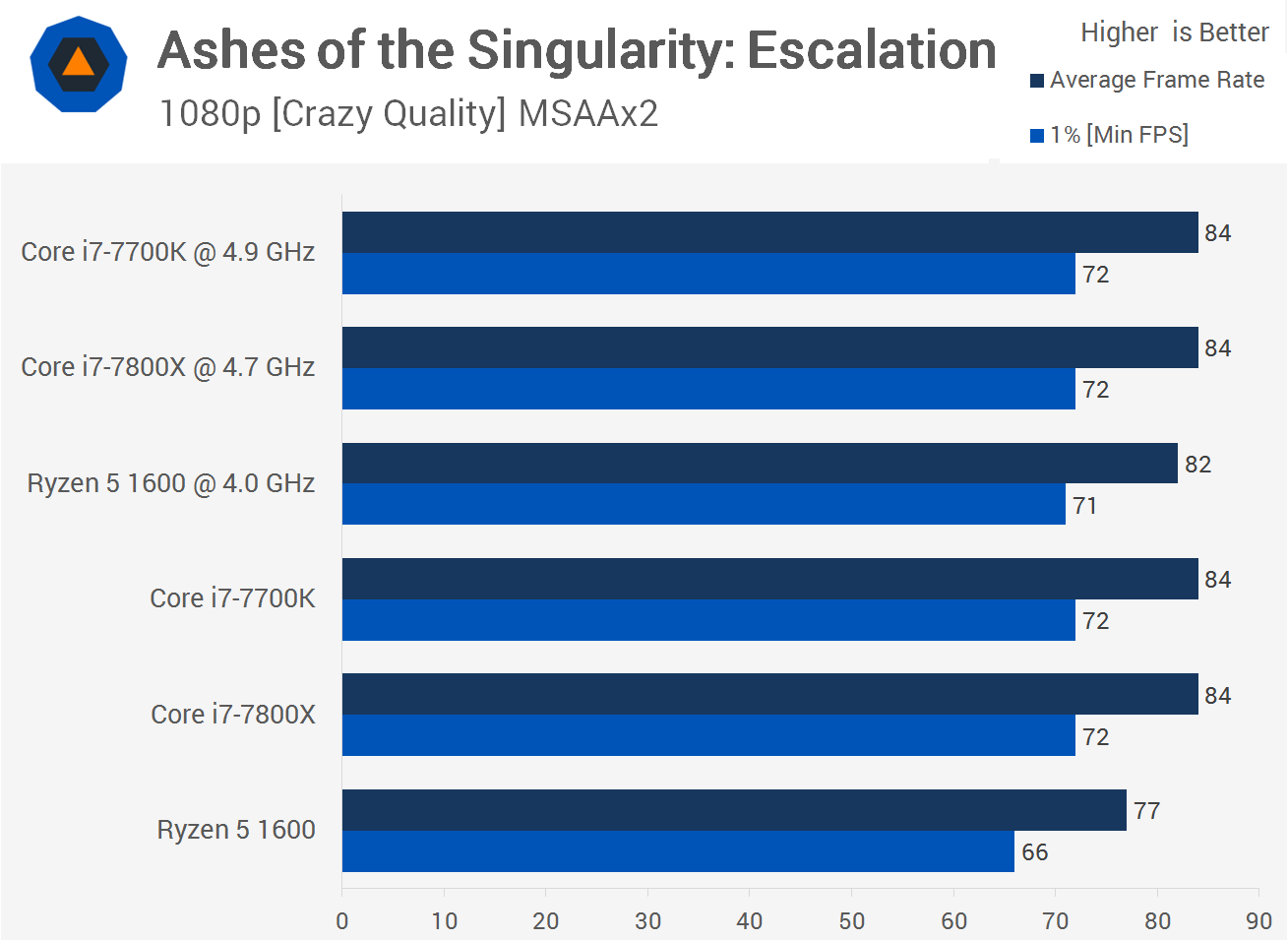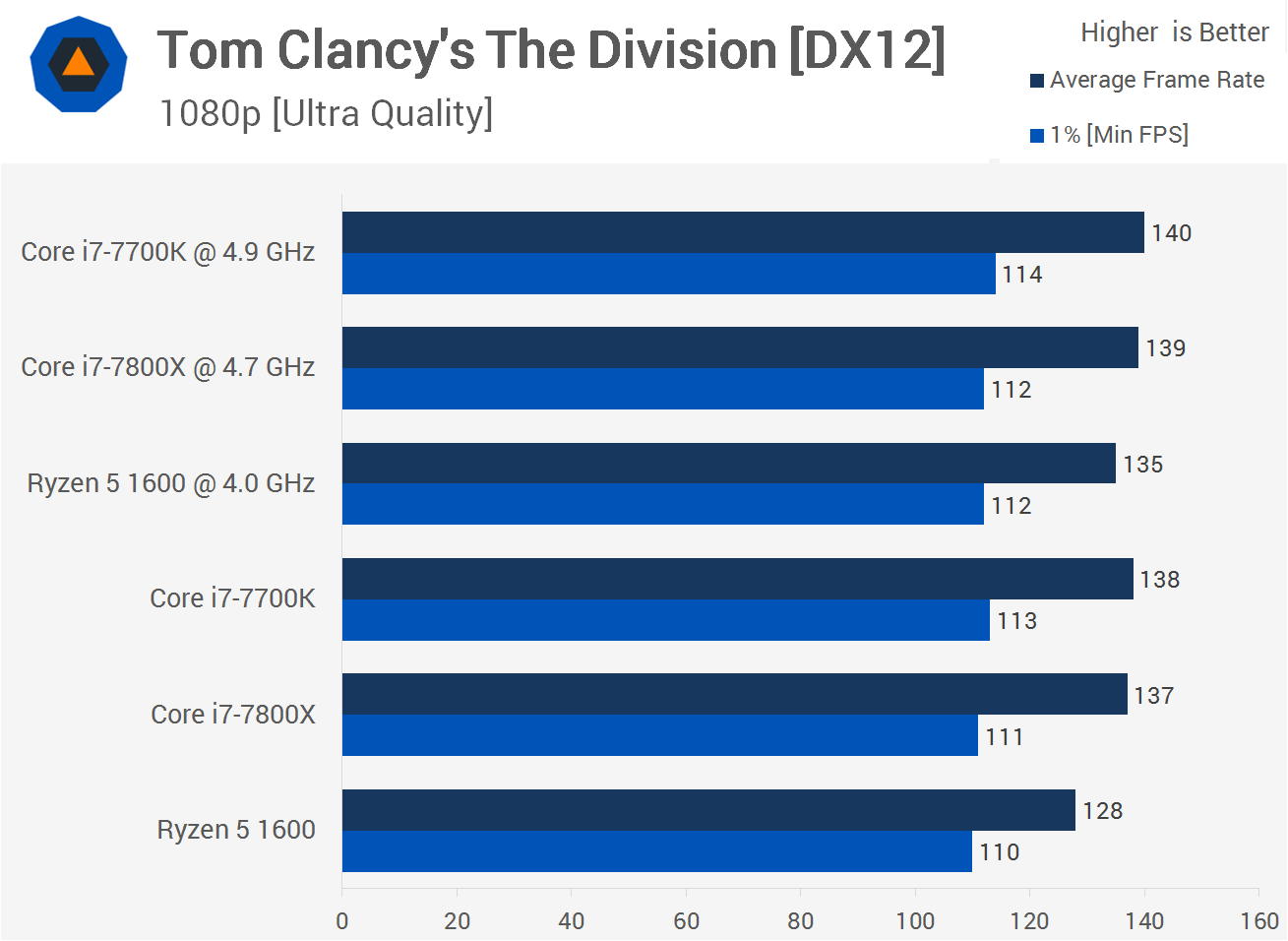Tomb Raider, Ashes of the Singularity, Far Cry, The Division

When testing with Rise of the Tomb Raider, the R5 1600 is 12% slower than the 7800X. I'm looking at the average frame rate since the minimums are identical. However, once overclocked the R5 1600 was just 1.5% slower on average but 12% faster for the minimum, so that's an interesting result indeed. Again these figures are based on a three run average and the Ryzen CPU was consistently faster for the minimum.

I have continued to test Ashes of the Singularity Escalation using the crazy preset which pretty much GPU-bottlnecked the Intel CPUs. That said, the same isn't true for the Ryzen 5 1600 as it struggled to get the most out of the GTX 1080 Ti. Overclocking certainly helped but it was still a frame or two off maxing out the GeForce graphics card.

Far Cry Primal is a funny game and it was one of the few titles that really baffled us when testing Ryzen for the first time. The performance was just so much lower than expected when compared to the 7700K and yet we found the exact same thing with the 7800X. In fact, the 7800X and R5 1600 deliver similar numbers in this title and overall their performance was decent, frame rates never dipped below 60fps so it was a smooth experience at all times.

The Division is a GPU-limited title and while the R5 1600 is slightly down on the 7800X and 7700K for the average frame, it does roughly match the minimum result. At well over 100fps, you have to wonder if the margins matter at this point – they don't if you plan on running a graphics card equal to or slower than say a GeForce GTX 1070, anyway.
